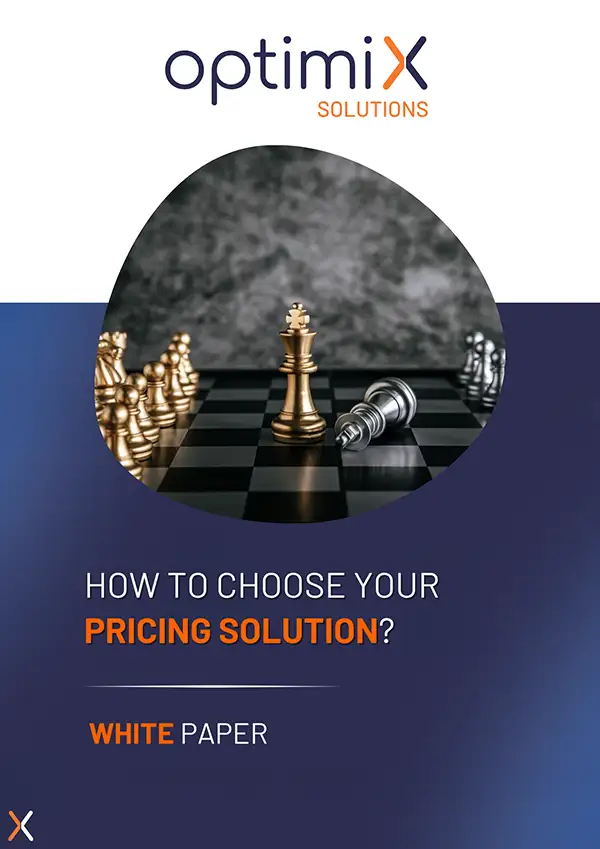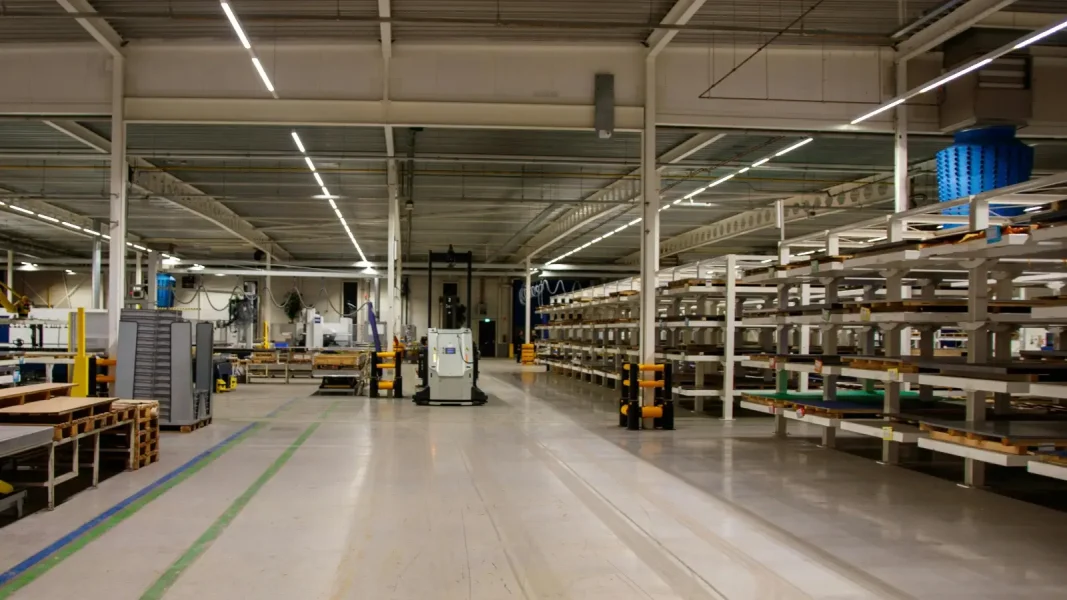The market is evolving at breakneck speed. Competitive pressure is intensifying, buying behavior is fragmenting, and data is pouring in from all sides. Faced with this complexity pricing can no longer be content to be static or reactive. It is becoming a veritable field of innovation, where AI algorithms play more than just a strategic driving role. AI pricing takes shape
Too many companies are still suffering the effects of rigid pricing: eroded margins, slow reactions to market movements, decisions based on historical averages rather than real-time signals. Pricing teams struggle to reconcile data volume, speed of execution and finesse of analysis. The result: pricing inconsistencies and a loss of competitiveness.
Machine learning, the beating heart of artificial intelligence, enables companies to move from a static pricing logic to an intelligent, fine-tuned and profitable approach. It’s not just another automation: it’s a profound transformation in the way we think about, build and manage pricing. manage pricing. Thanks to AI algorithms, pricing adapts in real time to market signals, purchasing contexts and customer behavior. It becomes alive, intelligent and, above all, efficient.
What role does AI play in pricing?
The complexity of today’s markets makes traditional pricing methods inadequate. Companies are evolving in a context of heightened competition, multiple distribution channels (physical, digital, marketplaces), and increasingly volatile consumer behavior. Fixed pricing grids, standard margin logics and static competitor benchmarks no longer offer the necessary flexibility.
In this context, the question is no longer simply to determine the right price, but to know when, for whom and in what context to apply it. Marketing and revenue management departments need an AI-powered pricing tool to help them make quick decisions in real time, while looking ahead to the future.
This is precisely what machine learning enables: to move from a descriptive logic to a predictive and prescriptive one, at the service of a smarter, more agile pricing strategy.
The benefits of ia in pricing :
Greater responsiveness to market fluctuations.
Greater competitiveness without sacrificing profitability.
Data-driven rather than intuitive decisions.
Reduced human error and bias.
What Machine Learning brings to Pricing
The contribution of machine learning pricing is both quantitative and qualitative. From an analytical point of view, it makes it possible to exploit massive and heterogeneous volumes of data: sales history, purchasing behavior, seasonality, geolocation, channel used, competitive context, etc. This processing makes it possible to identify correlations invisible to the human eye, and to extract powerful insights into price/demand dynamics. This processing makes it possible to identify correlations invisible to the human eye, and to extract powerful insights into price/demand dynamics.
Machine learning also makes it possible to detect price elasticity by segment, i.e. the real sensitivity of each customer profile to a price variation. This capability is fundamental to avoid “underselling” a product to customers willing to pay more, or losing a target for a few euros too much.
Another key contribution is the ability to predict the impact of a price increase or decrease at product, channel or segment level. These predictive models are essential for anticipating the effects on volume, margin or loyalty.
Artificial intelligence can detect psychological thresholds and pricing tolerance zones that traditional approaches often ignore. This opens the way to finer, more personalized pricing, better aligned with the perceived value of each customer segment. The price image plays a vital role in building customer preference and differentiation from the competition. This is precisely where AI Pricing becomes a strategic lever: it reinforces trust, prevents perception breakdowns and sustainably supports competitiveness.
Real-life use cases: from the theoretical to the operational
Machine learning applied to pricing is not an abstract concept: it translates into concrete, measurable applications that are directly integrated into business processes. In the e-commerce sector, algorithms enable purchasing managers to adjust prices in real time, taking into account a set of key variables:
pre-established pricing rules,
catalog characteristics (product type, seasonality, positioning),
customer purchasing behavior (history, frequency, price sensitivity),
competitors’ prices,
current promotions,
the level of available stock,
margin and profitability targets.
This algorithmic approach transforms pricing into an agile and strategic lever, capable of responding to market fluctuations while maximizing the relevance of offers for each customer profile. In this way, it combines sales performance with a personalized experience.
In the transport or hotel sectors, AI-based yield management helps optimize occupancy rates and margins, by anticipating peaks in demand and adapting rates in real time.
Companies with rich customer data can also deploy individualized pricing, based on behavioral segmentation and interaction history. Finally, some brands use A/B pricing tests tests to evaluate the real impact of different pricing schemes, and adjust their policy on an ongoing basis according to the results.
In each case, the challenge is the same: offer the right price, at the right time, to the right target, while maximizing overall performance.
To find out how pricing impacts the performance of purchasing managers, we invite you to read our article here
Limits and Conditions for Success
While the potential is immense, the implementation of AI in pricing presupposes certain key conditions. First and foremost, data quality is paramount. An algorithm is only as good as the data it is given. Data governance – reliability, freshness, structuring – is therefore an essential prerequisite.
Secondly, algorithmic transparency is a growing challenge. It is essential to be able to explain, and even justify, the pricing recommendations generated by the models, especially in sensitive or regulated sectors.
Internal acceptability is also a critical factor. Sales and marketing teams need to be involved to understand the logic at play and be able to challenge the results. AI must not be seen as a black box that replaces strategy, but as a tool for amplification and decision support.
Finally, AI-driven pricing must remain aligned with brand positioning and overall strategy. Mathematically optimized pricing that is inconsistent with customer perception can quickly destroy perceived value.
Pricing tools powered by AI: XPA-Optimix Pricing Analytics
To fully exploit the potential of machine learning applied to pricing, companies today rely on specialized software solutions that combine algorithmic power, automation and business ergonomics. These platforms not only centralize data (sales, competition, inventory, behavior), but also apply predictive models on an ongoing basis to fine-tune prices.
Among the most advanced solutions on the market, XPA by Optimix Solutions stands out for its 360° approach to pricing: the tool integrates pricing, scenario simulation, break-even point management and price positioning modules, enabling retailers to make informed decisions in real time. Thanks to on-board AI, the platform offers a visualization of their pricing strategies, while giving teams control over strategic parameters (positioning, target margins, tolerance zones, etc.).
Other market players are also developing verticalized solutions for e-commerce, retail or services, but few of them combine advanced modeling, operational management and business integration in such a seamless way. The choice of tool is therefore strategic: it conditions the company’s ability to transform its data into profitable pricing decisions, while adapting to real constraints in the field.
AI, the catalyst for smarter pricing
AI does not replace human expertise: it reinforces, enhances and structures it. By adopting a data-driven and algorithmic approach to pricing, we can react in real time to market signals, optimize margins without sacrificing demand, and build consistent, credible and differentiating pricing.
In this respect, AI integrated into pricing tools becomes a powerful catalyst: it automates complex calculations, detects weak signals, identifies pricing tolerance zones and supports teams in their strategic arbitrations.
The AI and pricing strategy duo is therefore much more than an optimization tool: it’s the winning alliance for transforming price into a genuine lever for sustainable competitiveness. By combining the analytical power of algorithms and human discernment, companies move from a reactive logic to a proactive posture, capable not only of anticipating and adapting, but also of creating differentiating, sustainable value.







